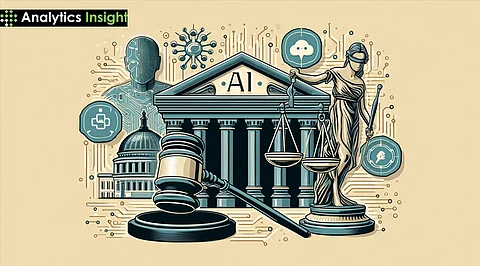

As AI technologies surge forward at a dizzying pace, they open up vast opportunities alongside a host of ethical dilemmas. In 2025, tackling issues like bias, transparency, and accountability in AI systems is not just important—it's imperative for fostering fairness, trust, and responsible innovation. This article explores the core dimensions of AI ethics, offering strategies to balance the risks with the transformative potential of AI.
Bias in AI can come from a variety of sources that can lead to unfair and discriminatory conclusions. There are several types of bias, but the three are:
Data Bias: The training sets are unrepresentative or biased, and then AI systems give some predictions based on group biases rather than individual predictions.
Algorithmic Bias: The algorithms contain flaws that may create bias even though the inputted data is unbiased.
Human Bias: Developers' or designers' unconscious bias may result in biased AI design and functionality.
For example, biased recruitment datasets can lead to gender and racial discrimination, reinforcing societal imbalances instead of addressing them.
Bias in AI systems has far-reaching real-world implications. For instance, biased datasets in facial recognition technology have led to discriminatory law enforcement practices that disproportionately affect minority groups.
In healthcare, AI-driven diagnostic tools trained on unrepresentative patient data have led to misdiagnoses and unequal access to care. These outcomes highlight the importance of developing fair and unbiased AI systems to prevent harm and promote equitable solutions across industries.
The lack of accountability dominates the AI landscape because, in most cases, it becomes ambiguous who should be held accountable when AI fails or causes harm. The issues involved in this include:
Transparency: Many AI models operate as "black boxes," hence traceless in their decision-making processes.
Legal Liability: There remains ambiguity on who is liable to be held accountable—between the developers, the organisations, or the AI system itself.
For instance, if an autonomous vehicle accident occurs, liability might be attributed to manufacturers, developers, and regulators. This complexity calls for urgent development of frameworks that would define clear accountability.
To address bias in AI systems, organizations need to be proactive and take the following steps:
Regular Audits: Periodic checks on AI models can detect and correct biases before they are released.
Diverse Data Sources: Involving data that represent diverse populations ensures that AI systems yield outcomes that treat all groups justly.
Human-in-the-Loop Systems: Involving human oversight in AI decision-making enables better detection and correction of biases.
These solutions increase not only the fairness but also the reliability of AI systems in diverse applications.
Building trust in AI systems requires transparency and explainability. Developers and organizations can promote such principles by:
Implementing Explainable AI: Developing models with clear and understandable explanations regarding their decisions helps users trust AI outputs.
Regulatory Frameworks: Governments must clearly outline responsibilities and accountability measures for organizations using AI.
These ensure that AI is performed in both effective and understandable manners with an ability to justify its performance.
Currently, organisations have a role to play in the orchestration of ethical concerns all across the AI life cycle. Key practices include:
Diverse Development Teams: It is also easier to avoid making more biases into your AI systems since you have your team consisting of members from different backgrounds.
Continuous Monitoring: The evaluation of deployed AI systems should be conducted regularly to identify new ethical problems, which may include bias or a breach of privacy.
Based on the following, ethical development practices not only reduce the risk factor but also ensure that the technologies incorporated are ethical.
Most governments and organisations around the globe are implementing ethical standards to regulate AI. Measures include:
AI Ethics Committees: Setting up of a committee to review certain ethical aspects of an AI project helps in maintaining responsibility at every level.
Transparency Reports: It is beneficial to establish transparency such that organisations will need to disclose more information regarding their application of AI.
These measures assist in reconciling between innovation in the production of AI technologies and the regulation of the same to ensure that the former is done in the right way.
Both public education and pressure contribute significantly to the definition of ethical practices in AI. Individuals and communities can:
Raise Awareness: Since people want organisations to be transparent and accountable, the public can exert pressure on organisations to achieve better standards.
Participate in Policy Discussions: Discussions about AI and its influence in society mean that the familiar voice of the people is heard in formulating regulations on this innovation.
This arrangement guarantees that deep learning benefits people right and everyone is encompassed.
The integration of AI into our societies demands a more serious effort to eliminate bias, enhance transparency, and enforce accountability. It's imperative for organizations to adopt ethical AI development practices to maximize the advantages of these technologies while fostering public engagement and trust. AI ethics transcends mere technology; it's a social imperative that requires ongoing correction, vigilance, and collective responsibility to ensure equitable outcomes.
